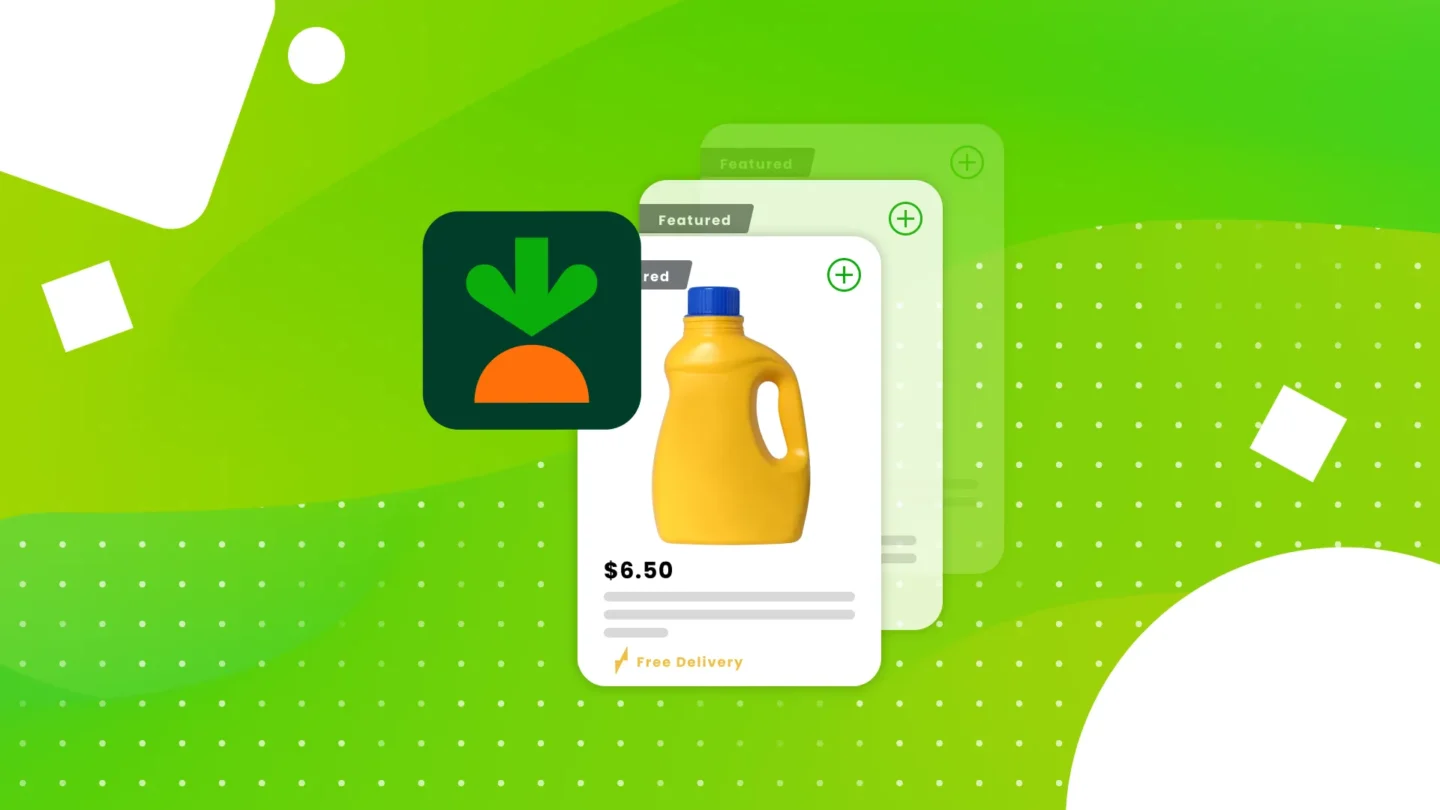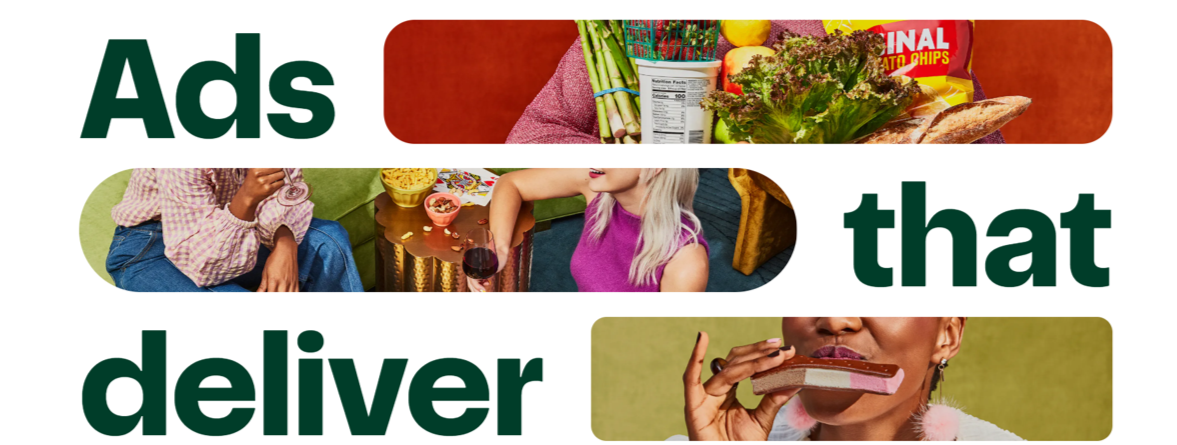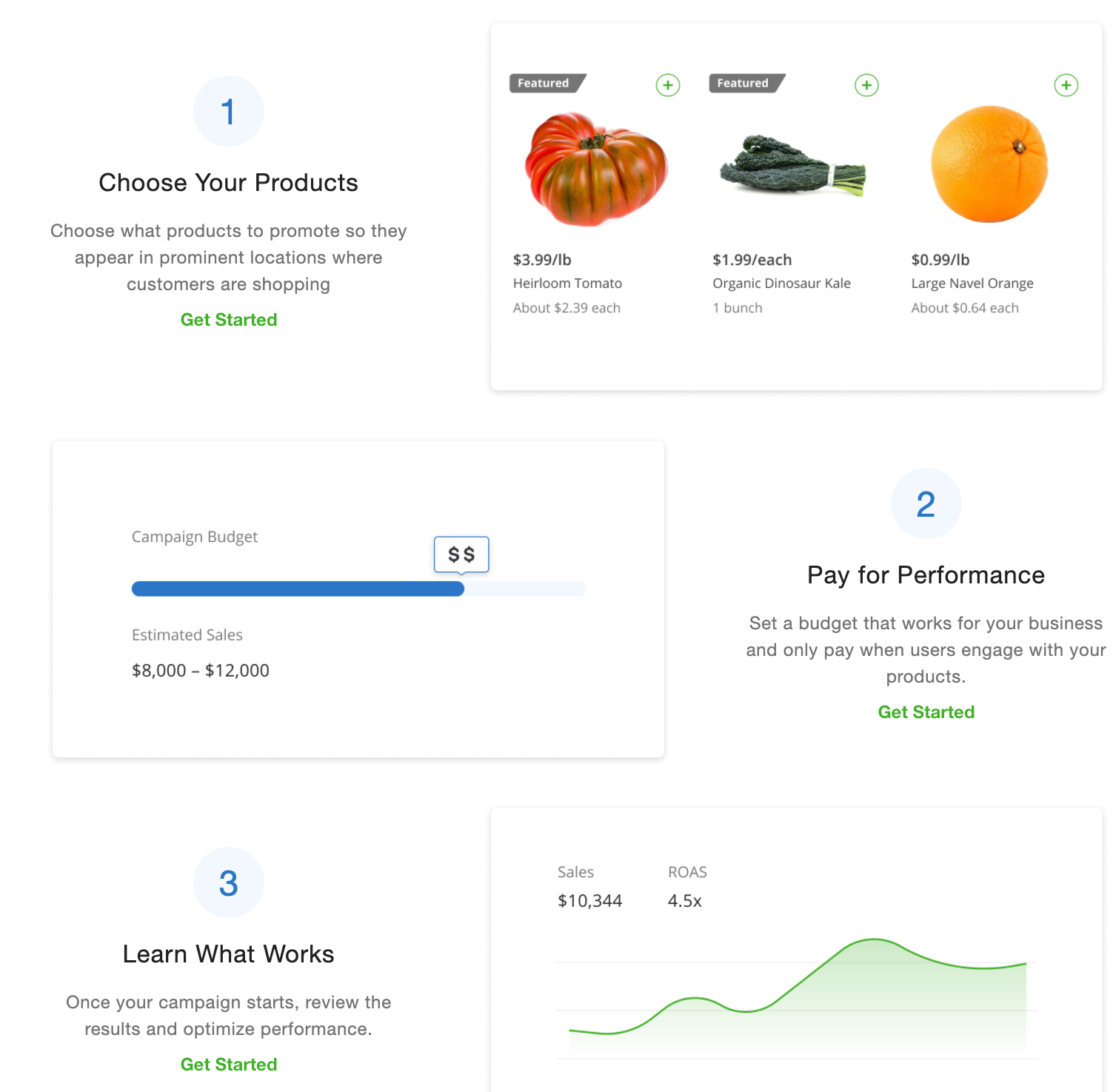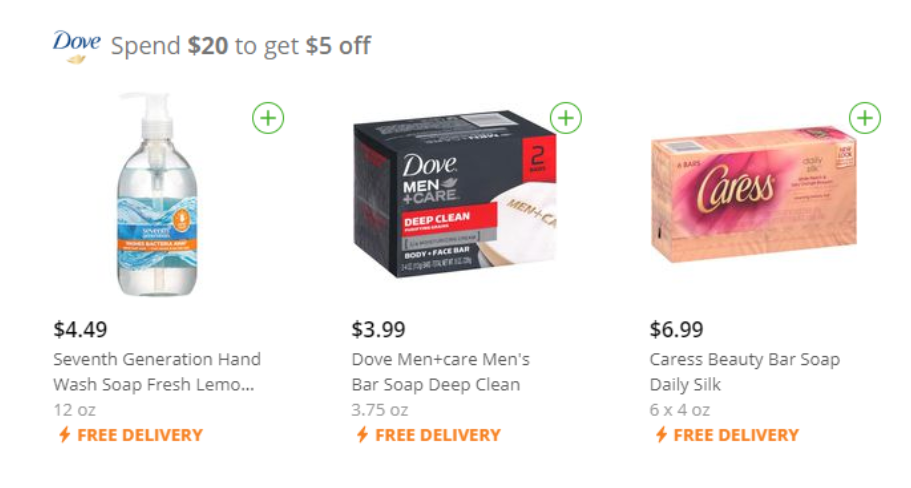How to Create Better Instacart Ad Campaigns [2024 Update]

Not long ago, online grocery was seen as the final frontier of the ecommerce industry. Today, grocery stands as one of the fastest-growing segments in ecommerce. Increased consumer demand, advances in same-day shipping, and grocery delivery marketplaces like Instacart have transformed how people shop.
The food and beverage retail sector is projected to exceed the $47 billion mark by 2025. With approximately 150 million online grocery shoppers, representing nearly half of the nation’s population, there’s no doubt that this customer base will grow exponentially in the years ahead. And as the grocery ecommerce landscape continues to expand, Instacart has emerged as an undisputed opportunity for brands to acquire and retain grocery and CPG shoppers.
Instacart users have high average order values, frequently make repeat purchases, and the platform is available to over 95% of households in the U.S. and Canada. The consumers are there, but the question is, are you reaching them?
In this post, we’ll give you a breakdown of Instacart ads, how they work, and the different Instacart ad campaigns you can launch to reach these highly engaged grocery shoppers.
“Instacart’s marketplace is becoming an enormous opportunity for brands that can get on the platform early. High conversion rates, average order values, repeat purchases, and lower CPCs are all positive signals for brands, in addition to reaching shopper households all across the U.S.”

— Elizabeth Marsten, VP of Strategic Marketplace Services
“Customers are also moving rapidly from thinking of just perishable staples to adding shelf-stables and other CPG products like cosmetics, health, and of course, alcohol. If you are in store at a participating retailer, then an Instacart ads program should be part of your media strategy,” Marsten added.
Let’s start with the basics…
Instacart is a grocery and CPG delivery or pick-up service that streamlines the shopping process through their site and app. If you visit Instacart.com, or download and open the Instacart app, you will be prompted to enter your address; this will determine which local stores are available for you to shop from through Instacart.
When you submit your order or orders, Instacart shoppers and drivers will be given the opportunity to accept the order. You will be notified once your shopper has begun fulfilling your order, and when it is en route.
As your shopper works through your order, you will have the option to approve any necessary substitutions due to out-of-stock items, or leverage the chat feature to communicate more directly with them. Some stores employ in-store shoppers that work at the same store all the time, and are responsible for filling the order, with another person delivering it. For other stores, the same person shops for and delivers your order, assuming you opted for delivery and not pick up.
Consumers are conveniently able to shop from more than one store at a time on Instacart, but each store will have its own separate cart, delivery fees, Instacart shopper, and minimum order value.
Advertising on Instacart is a powerful way for brands to connect with consumers, increase sales, and stay competitive in the rapidly evolving landscape of online grocery and retail. Luckily, Instacart makes the process easy for brands who are looking to advertise on their platform.
Instacart’s self-service ad platform, known as Ads Manager, allows brands to reach customers with advertising campaigns using a wide variety of advertising products to fit their specific needs. Instacart self-service advertising was launched in May 2020, allowing brands to easily create new campaigns, manage existing campaigns, review analytics and performance, and export data reports.
Instacart offers advertising solutions tailored to both Consumer Packaged Goods (CPG) brands through Instacart Ads and retailers through Carrot Ads. These offerings provide brands and retailers with tools to promote their products and reach their target audience on the Instacart platform. Both Instacart Ads and Carrot Ads come with analytics capabilities to help advertisers measure the effectiveness of their campaigns.
The great thing about Instacart advertising is that it’s not limited to brands selling food products with barcodes. It extends its support to a wide range of offerings, including fresh produce, as well as various non-food retail goods like laundry detergent, beauty products, and more. This versatility allows a diverse array of advertisers to promote their products and reach their target audience on the platform, making it a flexible advertising solution beyond traditional grocery items.

Instacart advertising shares a lot of similarities with other marketplace advertising platforms in terms of structure and bidding.
Here are some of the basics of Instacart’s advertising platform:

Instacart has significantly refined their operational and advertising capabilities in recent years and have expanded their offerings to become a true leader in the retail media space. Let’s take a quick look at the various ad types and promotions they offer potential advertisers.
Instacart Sponsored Products is an ideal feature for reaching users who are ready to buy. This ad type moves your product higher up on the digital shelf for increased visibility, ultimately driving more sales.

More details on Instacart Sponsored Products:
Display Ads on Instacart showcase your creative banners at the top of the search page to showcase your brand and offerings as consumers shop (as seen below):

More Details on Instacart Display Ads:
Shoppable Display Ads are similar to Display Ads but kicked up a notch by incorporating “add-to-cart” functionality to drive consideration and bigger baskets.

More Details on Shoppable Display Ads:
Shoppable Video Ads encapsulates all the features of Shoppable Display with an added video component to further engage shoppers as they browse.

More Details on Shoppable Video Ads:
Using Instacart Promotions, you can provide value and savings that will encourage customers to come back for more. This savings feature gives your brand the opportunity to distinguish itself in a competitive market by offering a range of deals to shoppers, such as “Buy X units, Save $Y.” These promotions show up directly on product item cards before checkout for easy accessibility.

Other Instacart Promotion Types Include:
Brand pages on Instacart are free, personalized landing pages that advertisers can easily create. They empower those in the CPG industry to steer consumers, both on and off the Instacart platform, toward a carefully curated and easily navigable Brand Page. These Brand Pages serve as a convenient shopping center, allowing consumers to delve into an extensive product portfolio and explore a wide range of offerings.

Brands can also pay to run delivery promotions in addition to hero banners (à la Sponsored Brands on Amazon).

Delivery Promotions:
Hero Banner:

Knowing your options when it comes to ads is a good start, but to have success on Instacart, you’ll need to put a solid strategy in place. Check out these seven tips for building better Instacart advertising campaigns.
Setting a budget is the first step in building successful Instacart advertising campaigns. While there’s no one-size-fits-all approach, we recommend starting with a minimum spend to test the waters. Generally, brands tend to spend in the ballpark of $300 to $1,000 per day. However, the ideal daily spend will depend on your specific goals, the competitiveness of your niche, and the scale of your campaign.
Once you’ve set a budget, it’s time to start organizing your product promotions. One strategy is to group your products by type or category. This makes it easier to tailor your ad content and targeting for specific product groups. Consider creating ad campaigns for products that have active coupons, as these tend to attract more attention and conversions.
Selecting the right keywords is crucial to the success of your Instacart ad campaign. Target exact keyword matches to ensure your ads appear for relevant searches. Analyze the types of keywords that drive conversions, and keep in mind that you can’t pause keywords (and the minimum bid is 15 cents). So, choose those keywords wisely to make the most of your budget.
Consider your products’ selling prices when setting bids—higher-priced items may warrant higher bids to maintain competitiveness. When it comes to bidding options, you can choose between manual and optimized bidding. Optimized bidding is a convenient choice for beginners but may limit your ability to make real-time adjustments. Last but not least, make sure you are setting a minimum ROAS goal to ensure you’re hitting or exceeding your profit target.
To reach your audience effectively, consider targeting specific geographic locations. This can help you tailor your campaigns to the preferences and needs of customers in those areas, increasing the relevance of your ads.
Quality assurance is essential to maintain the effectiveness of your campaign. Verify the accuracy of product information, including UPCs, inventory levels, and item descriptions. Ensure that your product images are high-quality and eye-catching, as they play a large role in attracting shoppers to your listings.
Successful Instacart advertising requires ongoing monitoring and optimization. Utilize the options available in Instacart Ads Manager, including tracking ROAS and monitoring new-to-brand sales. You can also work with an agency, like Tinuiti, for more custom and sophisticated reporting. Use the data at your disposal to ensure you’re getting the best possible ROI. Make changes to your campaign either on the fly or after it concludes to continuously improve its performance and effectiveness.
Instacart has become a household name across the U.S. as consumers look for a solution to buy groceries and goods from their local retailers. Brands that already sell grocery and CPG products in major retailers are leveraging Instacart to get ahead of the competition by capitalizing on the convenience that Instacart offers.
Ready to get started on Instacart?
Learn more about how we can partner with you for success on Instacart today.
